OrcaLab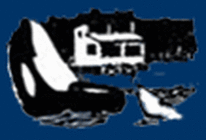
OrcaLab research is land based research centre, which works well in their area with its many waterways and relatively small distances. OrcaLab’s location on Hanson Island at Blackney Pass in Canada is perfect for reception of radio signals from Johnstone Strait & Blackfish Sound, two of the most important areas used by the whales.
Visit OrcaLab's Facebook and Twitter page for up-to-date information about Northern resident orcas. |
OrcaLab HydrophoneLISTEN LIVE: Northern resident orcas on the OrcaLab hydrophones! Just click on the link above to download and open in your media player. You can find out who you are listening to by visiting the Orca Live site and clicking on 'Community'.
OrcaLab Live Video StreamWATCH LIVE: Northern resident orcas on the OrcaLab camera! Click on the link above to open the live video stream.
|
Center for Whale Research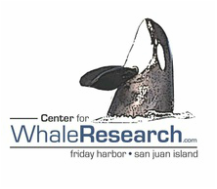
Orca Network

|
Salish Sea Hydrophone NetworkLISTEN LIVE: The Salish Sea hydrophone network's goal is to monitor the critical habitat of endangered Southern resident orcas to detect orca sounds and measure ambient noise levels.
Southern Resident Orca IdentificationFind out how Southern resident orcas of the Pacific Northwest are identified and find out how to distinguish between male and female orcas with the Center for Whale Research.
Orca Aware Interview:
|
Monterey Bay Whale Watch Research
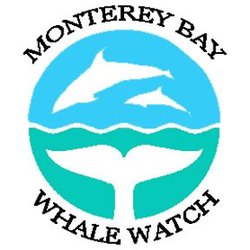
|
Monterey Bay Whale Watch (with Alisa Schulman-Janiger, California Killer Whale Project) hold the orca identification catalogue for California. They continue to conduct photo-identification and behaviour studies on orcas in the Monterey Bay area, focusing on documenting social structure and predatory behaviour.
You can also visit the Monterey Bay Whale Watch Facebook page for up-to-date information and photographs of orcas in California waters. Transient (Bigg's) orcas, offshore orcas, and Southern resident K and L pods have been sighted in Monterey Bay. |
Pacific Northwest Orca Identification System
Are you confused by the system of numbers and letters used to identify the Northern and Southern resident orcas of the Pacific Northwest? The letter (e.g. 'I' in the case of I15) signifies the pod the animals belong to and the number (e.g. 15) indicates the matriline of that particular group of individuals (the female matriarch). The Northern residents consist of three clans (A, G and R), of which the I15s belong to G clan. Here's a great resource to try and get to grips with who is who and which animals belong to which pod and clan. At the top there are three rows of boxes - the first row shows the pods belonging to A clan, the second to G clan and the final row shows the pods belonging to R clan. Click on each box to follow the family tree of each group back to the matriarchal female.
Transient Orca Encounter, January 2013
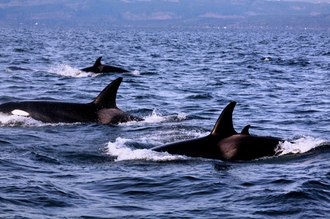
Photo: Josh McInnes
Transient killer whale research field notes by Josh McInnes:
"Today we went out and at about 1:30 we caught up with the T137s (T137, T137A, T137B, T137D). They were swimming at high speed west of Beacher Bay about two kilometers offshore. About 45 minutes were spent and they covered 4 kilometers. It turned out that there were three groups I was able to ID: the T36Bs (T36B, T36B1 and T36B2), T68Bs (T68B, T68B1, T68B3). Within the T36Bs I was able to catch a small glimpse of T68B2 the new calf."
For more information about the transient orca population, visit the Transient Killer Whale Research Project.
"Today we went out and at about 1:30 we caught up with the T137s (T137, T137A, T137B, T137D). They were swimming at high speed west of Beacher Bay about two kilometers offshore. About 45 minutes were spent and they covered 4 kilometers. It turned out that there were three groups I was able to ID: the T36Bs (T36B, T36B1 and T36B2), T68Bs (T68B, T68B1, T68B3). Within the T36Bs I was able to catch a small glimpse of T68B2 the new calf."
For more information about the transient orca population, visit the Transient Killer Whale Research Project.
Northern Resident Orca Encounter, September 2012
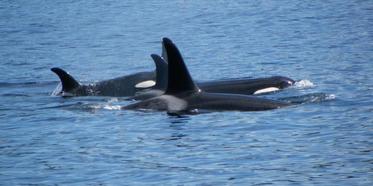
Thank you to Jayne for sharing her experiences:
"I've just returned from B.C Canada and spent an amazing time on the water with the Mackay family. I saw the northern resident orca's A23s, A25s, I15s, A30s, A12s and we think A75 has a baby this year which was so cute. The pacific white sided dolphins are on the increase pods which kept chasing the resident orcas and the humpbacks it was like watching bees buzz around a hive - one humpback got quite vocal and the orcas were taking longer dives to get rid of the little critters... The dolphins were lovely to see but I never thought they chased larger whales let alone one of the top preditors in the sea! I was very lucky to listen to I15s on the hydrophone the eeyore sounds they make are breathtaking; the eeyore sounds are typical of the G Clan and the A Clan make cat meow sounds. On a more serious note though it's not all plain swimming for the majestic resident orcas; this year they are having to swim longer distances for salmon. Apparently the wild stocks of salmon are decreasing each year, mainly due to over-fishing and increased fish farming."
"I've just returned from B.C Canada and spent an amazing time on the water with the Mackay family. I saw the northern resident orca's A23s, A25s, I15s, A30s, A12s and we think A75 has a baby this year which was so cute. The pacific white sided dolphins are on the increase pods which kept chasing the resident orcas and the humpbacks it was like watching bees buzz around a hive - one humpback got quite vocal and the orcas were taking longer dives to get rid of the little critters... The dolphins were lovely to see but I never thought they chased larger whales let alone one of the top preditors in the sea! I was very lucky to listen to I15s on the hydrophone the eeyore sounds they make are breathtaking; the eeyore sounds are typical of the G Clan and the A Clan make cat meow sounds. On a more serious note though it's not all plain swimming for the majestic resident orcas; this year they are having to swim longer distances for salmon. Apparently the wild stocks of salmon are decreasing each year, mainly due to over-fishing and increased fish farming."

